Andrew Petherick
Baroque Library Design
The Philosophical hall, Strahov Monastery, Prague
There are many baroque rooms to take inspiration from when preparing an interior design of this nature. During design meetings with the Hall’s owner, one particular room caught our eye, the breathtaking Philosophical Hall in the Strahov Monastery in Prague, arguably one of the most beautiful libraries and interiors in The World. The library in the Philosophical Hall was built in 1779. We flew to Prague to survey some of the detail (with kind permission from the monastery).
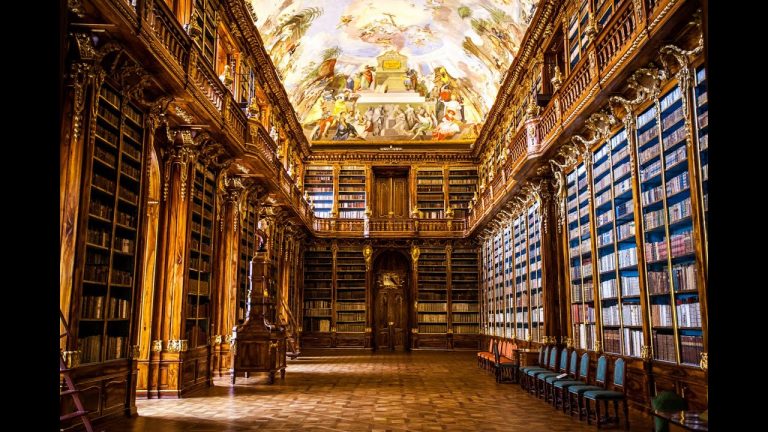
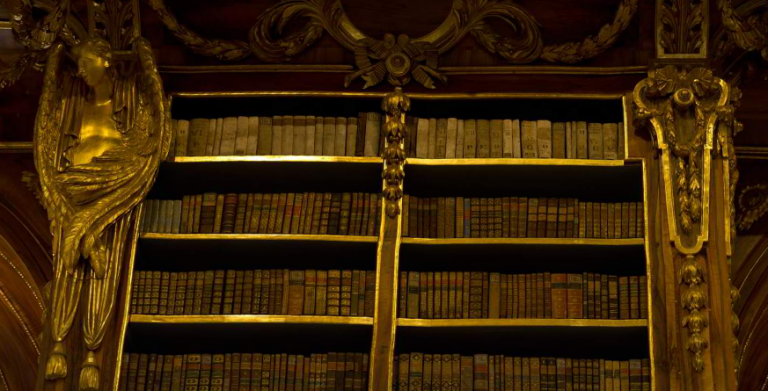
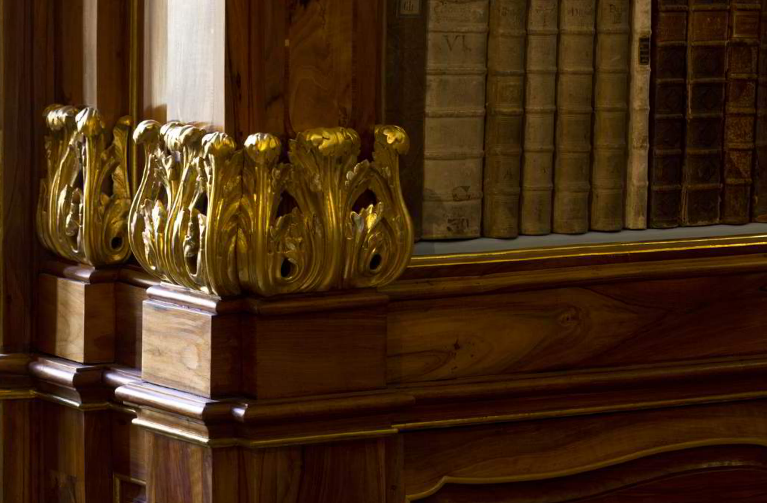
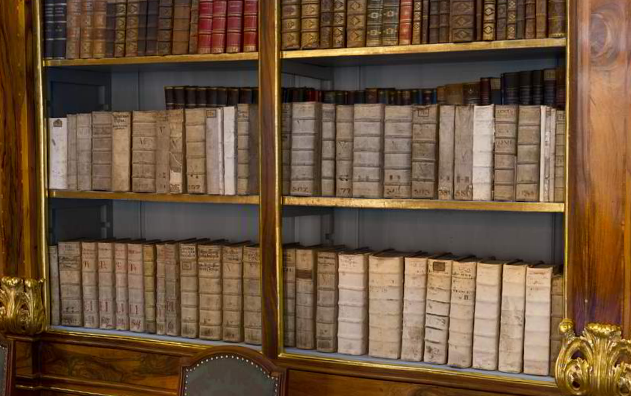
Stunning wild grain walnut was used throughout the library because it is so beautiful and works well in a room of this size.
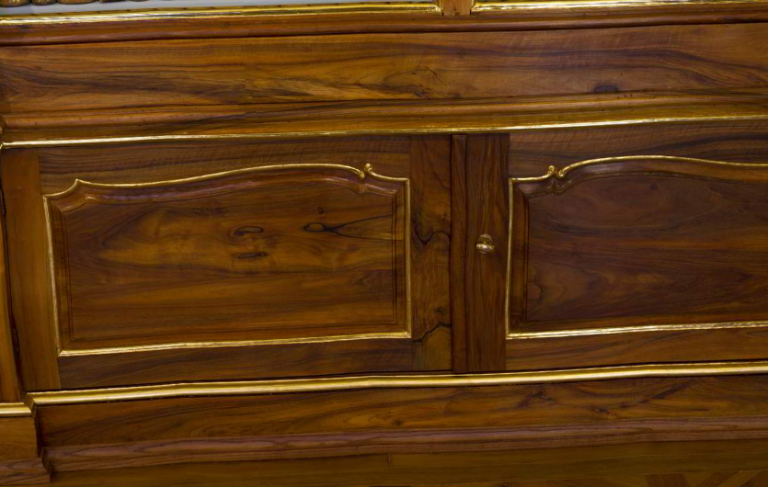

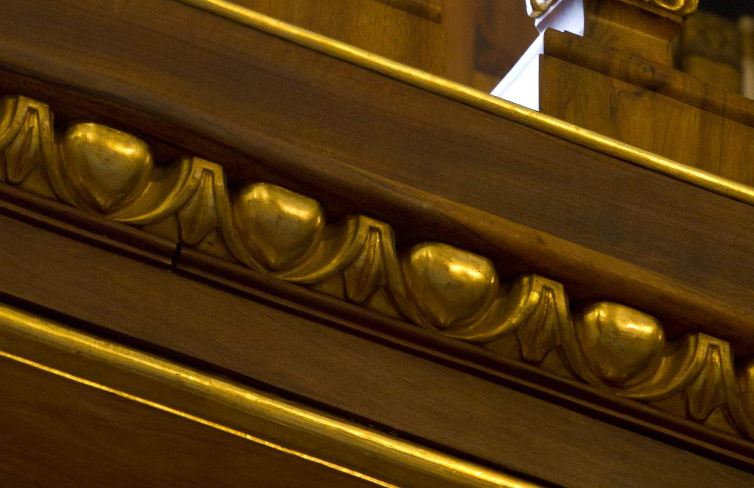
Creative Design Work


Close up of the entablatures below show the gilded swags and tails, egg and dart, dental mold and gilded acanthus leaves.
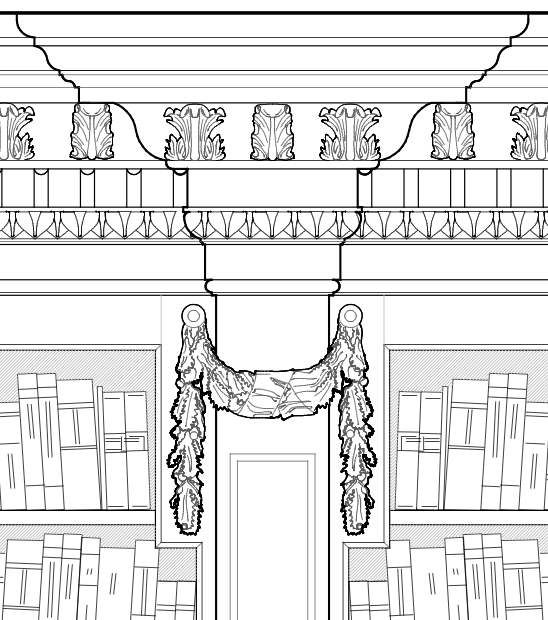
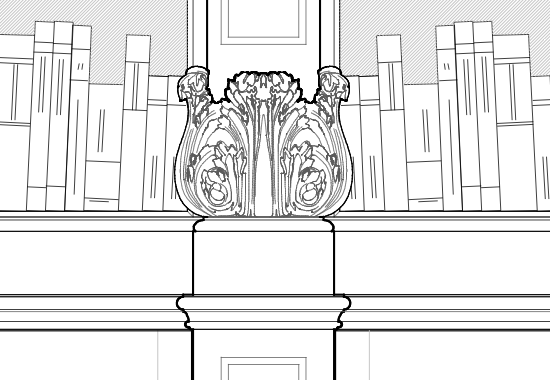
Hand carving
This image shows work in progress of the carved gilding work. All the carving in the library is being undertaken under Artichoke’s direction by Ian Agrell Carving, an English company with offices in London, San Rafael and Calcutta. The company is run by master carver Ian Agrell, one of the few carving companies who never carve by machine. Their work is of the highest possible quality (which is why we use them). All of this work is undertaken by eye using the sharpest chisels. Ian’s video is below.
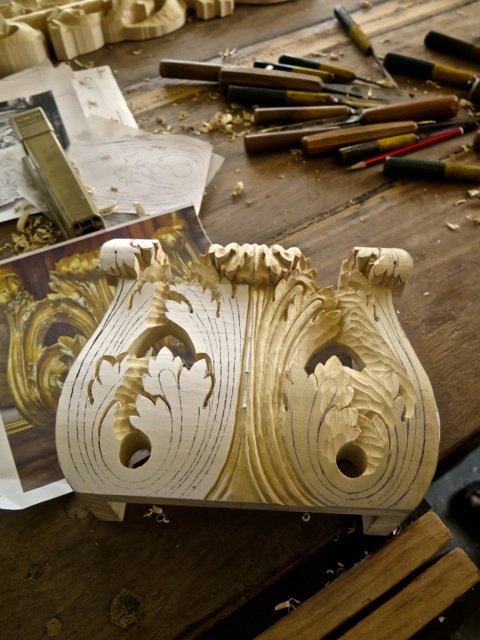
An acanthus leaf being worked on by hand, below. The carving is undertaken in Calcutta by carvers specially trained in classical detailing. Their work is crisp, accurate and leaves an excellent surface upon which the gilding teams can layer their gesso and gilding work. Note how the hand-drawn paper template guides the carver through the shapes and layers of the detail.

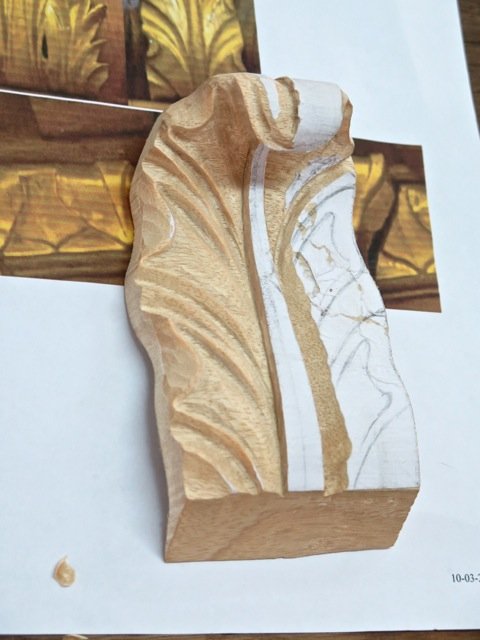

Gilding samples
Samples of gild work were produced concurrently to help gauge the correct level of brightness for the final gild work. The image below shows how different types of gilding can alter the final look of carved work. We specified water gilding for the library, which is a traditional method of applying gold leaf to a surface. It is the highest quality of all gilding methods.
The larger piece on the left has been lightly antiqued to look in period, while the other items have a much brighter and fresher tone. We partnered with Gareth from Watergilders who is undertaking the water gilding of these items.

Production Engineering
Once the final creative design is signed off, we move on to the Production Engineering phase where Artichoke’s technical designers model the room in 3D to work out the most efficient and best methods of constructing the room. We are, in effect, digital cabinet making at this stage. Each component is constructed in digital form so we know how it interacts with other component parts.
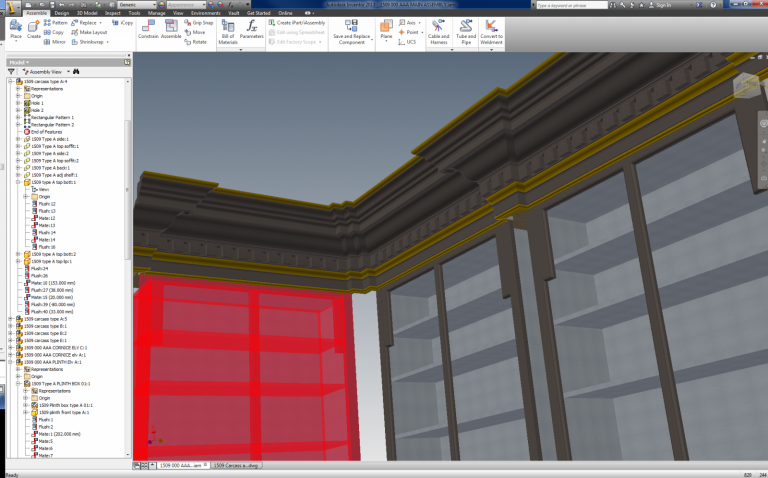
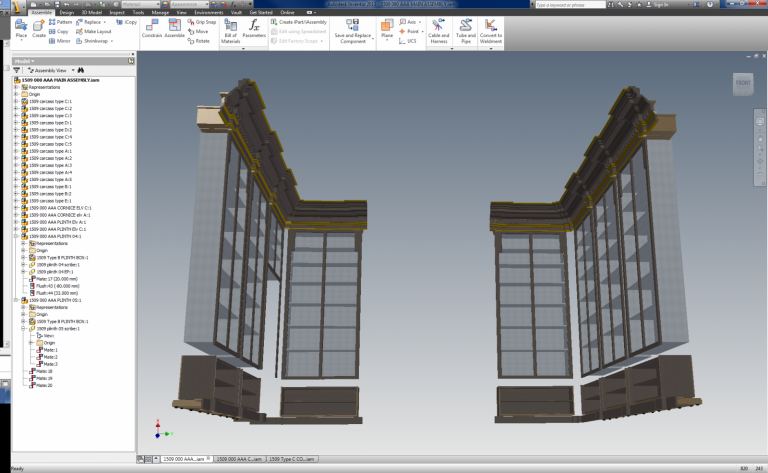
Water gilding
The image below shows the various stages of the water gilding process being undertaken by the Watergilders team, starting from bottom right. Up to ten layers of gesso (white) are added to the timber substrate and smoothed down (see bottom right) before a yellow-gold gilding clay is added. Burnishing clay, or bole, is then added to parts of the molding before the gold leaf is applied. This is then dampened with water to encourage the leaf to stick to the surface before it is then burnished by hand with an agate.
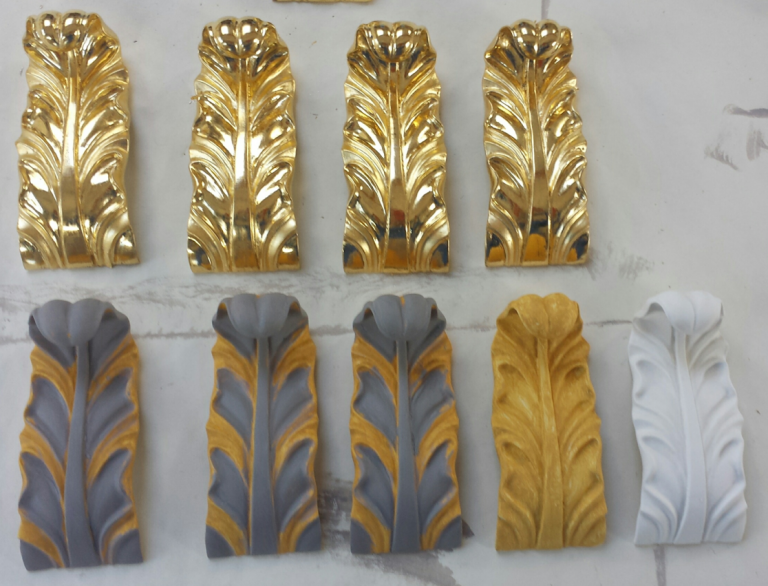
Production
Below are images of the base cabinets in assembly at Artichoke’s workshop with the hinges about to be fitted. The finish has already been applied to the perimeter of the panels which are made from solid walnut. These solid panels will contract in size as the timber acclimatises to the domestic environment. Pre-finishing the edge first allows for the panel to contract within the frame without revealing any unfinished timber at the shrinkage points.
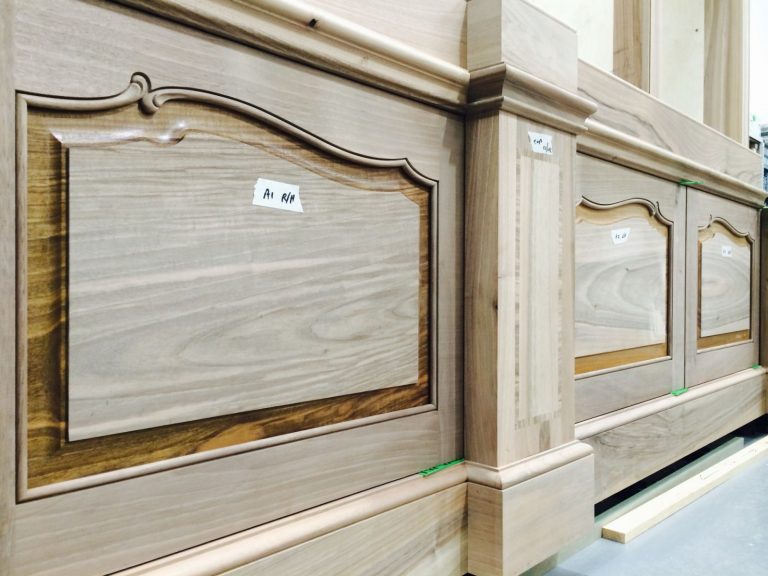
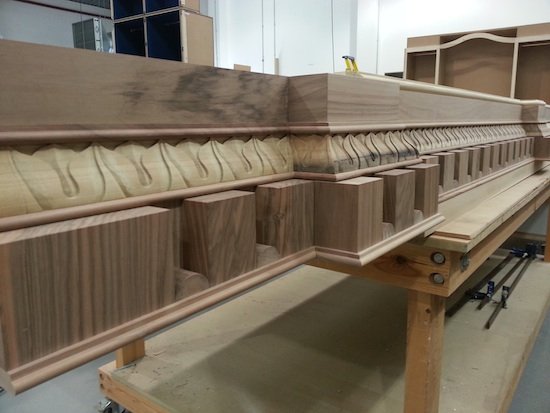
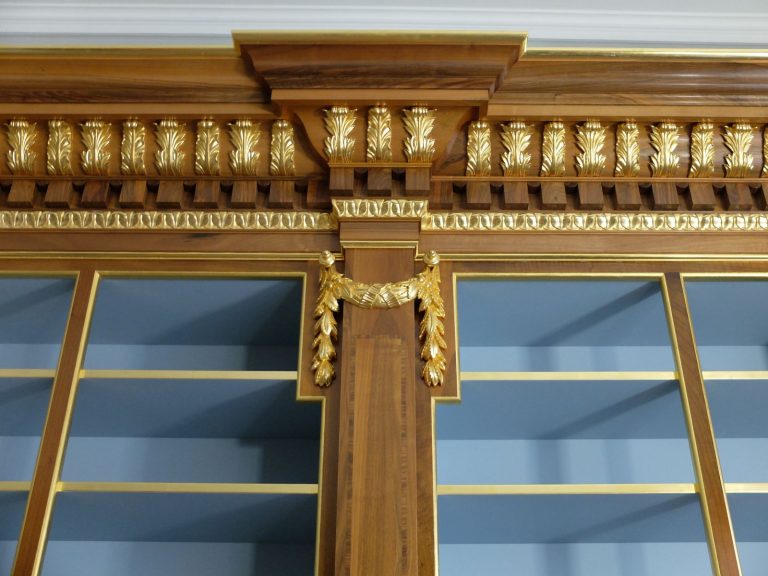
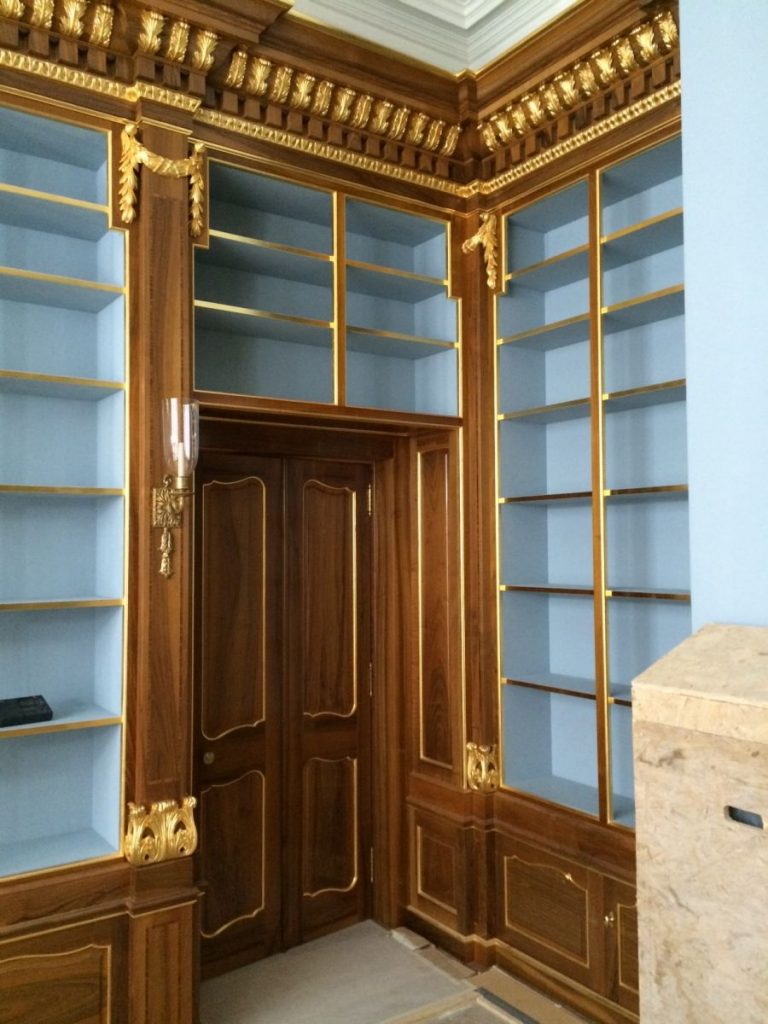
A Nice Surprise
Finally, as a surprise for the client and a thank-you gift to them from us, Artichoke secretly designed in this book-operated secret drawer. Every great baroque library should have one!